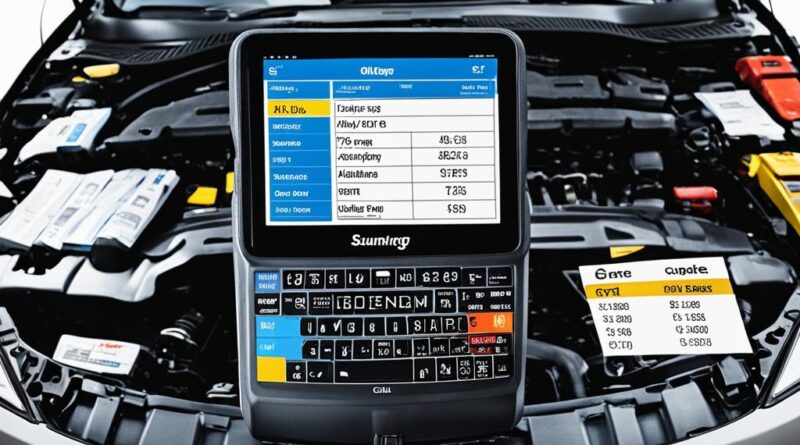Oil Change Receipt Template | Quick & Easy Guide
Oil change receipts are not just pieces of paper; they are powerful tools that can drive customer satisfaction, build trust, and ensure the smooth operation of an oil change business. In 2022, the U.S. oil change market was valued at USD 7.48 billion, with an expected 5.3% CAGR from 2023 to 2030. Oil change receipts serve as proof of service and contribute to a vehicle’s history, making them crucial for warranty claims, disputes, and maintaining the resale value of a vehicle.
Key details that should be included in an oil change receipt are the service provider’s name and address, customer’s name and contact information, date of service, vehicle details (make, model, year, VIN), current odometer reading, type of oil used, oil filter replacement, quantity of oil used, labor and service charges, air filter replacement, fluid top-ups, tire rotation, inspection report, mechanic’s signature, and customer’s authorization. Businesses can streamline the creation and management of oil change receipts by using digital solutions such as Torque360.
Key Takeaways:
- An oil change receipt is a powerful tool that drives customer satisfaction and builds trust.
- Oil change receipts contribute to a vehicle’s history, making them crucial for warranty claims and maintaining resale value.
- Key details to include in an oil change receipt include service provider information, customer details, vehicle information, service details, and authorization.
- Digital solutions like Torque360 can streamline the creation and management of oil change receipts.
- Using an oil change receipt template can ensure professionalism, consistency, and efficient record-keeping.
Importance of Oil Change Receipts
Oil change receipts are more than just pieces of paper; they serve as crucial documentation for vehicle owners and service providers alike. These receipts play a critical role in providing proof of service and maintaining a vehicle’s warranty. Failing to provide evidence of timely oil changes can void a vehicle’s warranty, making oil change receipts essential for protecting the vehicle owner’s investment.
Moreover, oil change receipts contribute to a vehicle’s maintenance history, which significantly impacts its resale value. Prospective buyers often request maintenance records to assess the condition and reliability of a vehicle. Having a comprehensive record of oil changes demonstrates diligent maintenance and can make a vehicle more attractive to potential buyers.
Additionally, oil change receipts serve as tangible proof of maintenance, which is invaluable in situations such as warranty claims and disputes. When conflicts or disagreements arise regarding oil change services, having a documented receipt with detailed information offers objective evidence to support one’s claims or dispute any discrepancies.
By maintaining oil change receipts, vehicle owners can ensure accurate documentation of each service performed, establishing a reliable vehicle history that supports both warranty claims and resale value.
Proof of Service and Warranty Claims
Oil change receipts stand as solid proof of timely maintenance, ensuring that warranty claims are valid and honored. When warranty coverage is in question, oil change receipts verify that the vehicle owner has adhered to manufacturer-recommended service intervals, protecting their rights and avoiding unnecessary disputes.
Preserving Vehicle History and Resale Value
A comprehensive vehicle history, backed by oil change receipts, instills confidence in potential buyers. Buyers often seek assurances that a vehicle has been well-maintained, and having a documentation of regular oil changes can significantly enhance a vehicle’s resale value.
Tangible Evidence in Disputes
Oil change receipts serve as tangible evidence in cases of disputes, providing a factual record of what services were performed and when. In situations where there are disagreements about workmanship or the quality of service, oil change receipts offer objective evidence that can help resolve disputes efficiently.
Having a complete record of oil change receipts demonstrates that a vehicle has been well-maintained, making it more attractive to buyers.
Key Details for an Oil Change Receipt
An oil change receipt should include the following key details:
- Service Provider’s Name and Address: Clearly state the name and physical address of the establishment or mechanic that performed the oil change.
- Customer’s Name and Contact Information: Include the customer’s full name and up-to-date contact details for reference.
- Date of Service: Specify the exact date when the oil change took place.
- Vehicle Details (Make, Model, Year, VIN): Provide comprehensive vehicle information, including the make, model, year, and Vehicle Identification Number (VIN) to accurately identify the serviced vehicle.
- Current Odometer Reading: Record the vehicle’s current mileage to track usage and adhere to maintenance schedules.
- Type of Oil Used: Indicate the specific type and grade of oil utilized during the oil change, such as synthetic, conventional, or a specialty blend.
- Oil Filter Replaced: Note whether the oil filter was replaced during the service.
- Quantity of Oil Used: Specify the volume or quantity of oil added to the vehicle during the oil change.
- Labor and Service Charges: Clearly outline the cost breakdown, including labor charges and any additional service fees.
- Air Filter Replacement: If an air filter replacement was part of the service, document it on the receipt.
- Fluid Top-Ups: Record any fluids, such as coolant or windshield washer fluid, that were topped up during the oil change.
- Tire Rotation: If tire rotation was performed along with the oil change, include this service in the receipt.
- Inspection Report: Mention any inspection findings or recommendations made during the service for transparency.
- Mechanic’s Signature: Include the signature of the mechanic who performed the oil change, confirming their involvement in the service.
- Customer’s Authorization: Secure the customer’s authorization or acknowledgment of the services performed and the associated charges by including their signature or consent.

Having a comprehensive oil change receipt ensures accurate documentation of the service and provides a record of important information for both the service provider and the customer. These details contribute to transparency, accountability, and customer satisfaction.
Benefits of Using an Oil Change Receipt Template
Using an oil change receipt template can significantly simplify the process of creating and managing oil change receipts. Templates offer numerous benefits, including:
- Professionalism and Consistency: Templates provide a standardized format for receipts, ensuring a professional and consistent appearance across all receipts.
- Time-Saving: Templates eliminate the need to start from scratch for every receipt, saving time and effort.
- Customization: Templates can be easily customized with business-specific information, such as the company logo, contact details, and additional fields as needed.
- Printable and Digital Formats: Templates can be printed for physical copies or saved as PDF files for digital storage and easy sharing.
- Accessibility: Templates can be easily accessed and reused whenever needed, making the receipt creation process more efficient.
Using an oil change receipt template simplifies the process, ensuring a professional and consistent appearance while saving time. Templates can be customized with business-specific information and are available in printable and digital formats for easy access and storage.
Organizing and Storing Oil Change Receipts
Effectively organizing and storing oil change receipts is essential for both personal and business purposes. Implementing best practices for organizing and storing receipts ensures easy access, efficient record-keeping, and peace of mind. Here are some key tips:
- Digital Storage: Digitize paper receipts by scanning or photographing them, and organize them in electronic folders. Consider utilizing specialized receipt management apps or cloud-based storage services for convenient access and secure backups.
- Physical Storage: For paper receipts, use an accordion file, filing cabinet, or designated envelope system to categorize and store them by date or type. This method allows for easy retrieval when needed.
- Backups: To safeguard against physical damage or misplacement, create digital backups of important receipts. Save them on multiple devices or in the cloud to ensure redundancy and protect your records.
- Regular Review: Set aside dedicated time periodically to review and purge receipts that are no longer needed. Removing unnecessary receipts keeps your records clutter-free and makes it easier to locate relevant information.
By implementing these practices, you can maintain an organized system for storing and accessing your oil change receipts, ensuring accurate documentation and streamlined record-keeping.
Using an Oil Change Receipt Template
Using an oil change receipt template is a simple and efficient way to ensure accurate record-keeping for your oil change business. Here’s a step-by-step guide on how to effectively utilize a template:
- Downloading the Template: Start by downloading the provided oil change receipt template in PDF format.
- Customizing the Template: Tailor the template to your specific business needs by adding your service provider details, logo, and any other relevant information you require for your receipts.
- Printing the Template: Once customized, print the template on quality paper to create professional-looking physical copies for your records and customers.
- Filling in the Receipt: After each oil change service, fill in the receipt with the necessary details, ensuring accuracy and completeness. Include information such as the date of service, customer details, vehicle information, service details, and any additional charges.
- Saving and Storing Receipts: It’s crucial to make digital copies of each filled-out receipt for backup and easy access. Organize both physical and digital receipts in a systematic manner so they can be easily retrieved when needed.
By utilizing an oil change receipt template, you can streamline the process of creating professional receipts, improve your record-keeping practices, and ensure efficient management of your oil change business.
Example Oil Change Receipt Template:
| Service Provider Information | Your Company Name |
|---|---|
| Your Address | |
| Your Phone Number | |
| Your Email Address | |
| Customer Information | Customer Name |
| Customer Address | |
| Customer Phone Number |
Advantages of Using Receipt Management Software
Receipt management software, such as Torque360, provides numerous benefits for businesses seeking efficient management of oil change receipts. With features designed to streamline processes and enhance organization, this digital solution offers the following advantages:
Efficiency
Receipt management software automates the creation and maintenance of oil change receipts. By eliminating manual data entry and reducing the chance of errors, businesses can save valuable time and resources. This efficiency allows service providers to focus on their core operations, enhancing overall productivity and customer satisfaction.
Organization
Torque360 and other receipt management software offer robust organization capabilities. Service providers can easily categorize, search, and retrieve oil change receipts with just a few clicks. The software eliminates the need for physical filing systems and reduces the risk of misplaced or lost receipts. With an organized digital repository, businesses can access receipts quickly and efficiently, improving workflow and customer service.
Data Analytics
In addition to streamlining receipt management, Torque360 provides valuable insights through data analytics. The software analyzes spending patterns, allowing businesses to make informed decisions and track expenses effectively. By gaining a comprehensive view of their financial information, service providers can identify areas for cost optimization and implement strategies to enhance profitability. This data-driven approach improves financial management and supports long-term business growth.
| Advantages | Receipt Management Software |
|---|---|
| Efficiency | Torque360 and other receipt management software automate the creation process, reducing manual entry errors and saving time. |
| Organization | Software enables easy categorization, search, and retrieval of receipts, eliminating the need for physical filing systems. |
| Data Analytics | Receipt management software provides insights into spending patterns, helping businesses make informed decisions and track expenses effectively. |
By utilizing Torque360 or similar receipt management software, businesses can experience enhanced efficiency, improved organization, and valuable data analytics. These advantages contribute to streamlined operations, accurate record-keeping, and informed financial management, ultimately leading to improved overall performance and success.

Additional Information on Oil Change Receipts
“Bu” on a Walmart oil change receipt typically stands for “bulk unit,” indicating the quantity or volume of oil used for the service. This helps verify the type and amount of oil used during the oil change.
A small company’s oil change receipt should include basic details such as the company’s name and contact information, customer information, service date, vehicle specifics, service details (type of oil used, labor charges, etc.), and any additional services performed. It should also have space for the mechanic’s and customer’s signatures.
To create an invoice for an oil change, include your company’s name and contact information, customer details, service date, a description of the service, the cost breakdown (oil, labor, additional services), and the total amount due. Ensure it’s clear and includes payment instructions.
An oil change receipt typically includes service provider and customer details, service date, vehicle information, type of oil used, oil filter replacement, labor charges, any additional services performed, mechanic’s signature, and customer authorization. It may also have a professional header and footer for a polished appearance.
Benefits of Using Genio.ac’s Receipt Templates
Genio.ac understands the unique needs of auto repair shops, including those that provide oil change services. With our user-friendly and customizable receipt templates, businesses can streamline their receipt management process while ensuring accurate record-keeping and client satisfaction.
Genio.ac’s receipt templates have been a game-changer for our oil change business. The templates are highly flexible and customizable, allowing us to tailor the receipts to our specific needs and branding. Plus, they are incredibly easy to use, saving us time and ensuring consistency in our receipts.”
– Jane Smith, Owner of QuickLube Auto Care
By leveraging Genio.ac’s receipt templates, businesses can:
- Create receipts quickly and efficiently: The templates eliminate the need to start from scratch, allowing businesses to generate professional receipts in a matter of minutes.
- Customize receipts to match their brand: With our customizable templates, businesses can add their logo, contact information, and other branding elements to create a cohesive and professional look.
- Accommodate individual client needs: The flexibility of our templates allows businesses to include specific fields or information required by their clients, ensuring all necessary details are captured.
- Ensure accurate record-keeping: Genio.ac’s receipt templates provide a structured format that captures all essential information, making it easy to maintain accurate records and retrieve them whenever needed.
Here’s a glimpse of Genio.ac’s customizable oil change receipt template:
| Receipt Template | Features |
|---|---|
| Customizable Fields | Easily add or remove fields to align with your specific business needs |
| Flexible Layout | Arrange and organize information to provide a clear and comprehensive receipt |
| Professional Design | Polished and visually appealing layout that reflects your brand’s professionalism |
| Easy-to-Use | Intuitive interface that allows for seamless customization and generation of receipts |
With Genio.ac’s receipt templates, businesses can enhance their receipt management process, maintain accurate records, and deliver a professional experience to their clients. Try our receipt templates today and see the difference they can make for your oil change business.
Conclusion
Efficient record-keeping and accurate documentation are crucial for businesses and vehicle owners in the oil change industry. By utilizing a well-designed oil change receipt template, businesses can streamline their receipt management processes and ensure that all essential information is recorded and organized effectively.
Having a standardized oil change receipt template allows service providers to maintain accurate records, which is vital for maintaining warranties, resolving disputes, and providing proof of service. It also enhances the resale value of vehicles by demonstrating a well-documented maintenance history.
Streamlined receipt management, made possible through the use of customizable templates and digital solutions, saves time and effort for businesses. By following best practices and utilizing the right tools, businesses can create professional, accurate, and organized oil change receipts. This contributes to overall customer satisfaction and strengthens customer relationships, leading to long-term success in the competitive oil change market.
FAQ
What is the importance of oil change receipts?
Oil change receipts serve as proof of service, contribute to a vehicle’s history, and are crucial for warranty claims, disputes, and maintaining resale value.
What key details should be included in an oil change receipt?
The key details that should be included are the service provider’s name and address, customer’s name and contact information, date of service, vehicle details, current odometer reading, type of oil used, oil filter replacement, quantity of oil used, labor and service charges, air filter replacement, fluid top-ups, tire rotation, inspection report, mechanic’s signature, and customer’s authorization.
What are the benefits of using an oil change receipt template?
Using an oil change receipt template ensures professionalism, consistency, time-saving, customization, and the ability to create printable and digital receipts.
How should oil change receipts be organized and stored?
Best practices include using digital storage, physical storage, creating backups, and regularly reviewing receipts to keep records organized and easily accessible.
How do you use an oil change receipt template effectively?
The process involves downloading the template, customizing it, printing it, filling in the receipt after each service, and saving and storing the receipts systematically for easy access and retrieval.
What are the advantages of using receipt management software?
Receipt management software offers efficiency, organization, data analytics, and solutions like Torque360 to automate the creation process and streamline receipt management.
What additional information should I know about oil change receipts?
“Bu” on a Walmart oil change receipt typically stands for “bulk unit,” and a small company’s oil change receipt should include essential details such as the company’s name, customer information, service details, and necessary signatures. Additionally, creating an invoice for an oil change requires specific information and payment instructions.
What are the benefits of using Genio.ac’s receipt templates?
Genio.ac’s receipt templates are user-friendly, customizable, and flexible, helping businesses create and send receipts quickly and efficiently, ensuring accurate record-keeping and client satisfaction.
How do oil change receipts contribute to efficient record-keeping?
Oil change receipt templates and proper storage systems ensure accurate documentation, streamlined receipt management, and convenient access to information when needed.




